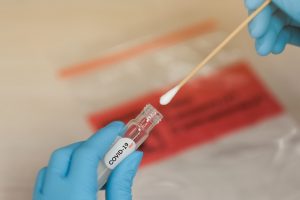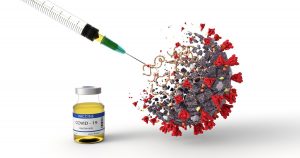Here’s the Covid-19 pandemic report from the Georgia Department of Public Health for midday, April 1:
Total test-confirmed cases statewide: 4,638
Statewide deaths: 139, an increase of 31 fatalities over the previous day’s 108, which is 28.7% higher than the March 31 report
State Covid-19 death rate: 3%
Fayette County: Confirmed infections — 48 with 4 deaths
Coweta County: Confirmed infections — 42 with 2 deaths
Hospitalized: 952, which is 20.53% of the total confirmed cases, compared to 818 in hospitals on March 31, an increase of 134 newly hospitalized patients (16.3% over the previous day)
Two weeks ago, Fayette County had 9 diagnosed cases of the Covid-19 respiratory illness, resulting in one death.
Fourteen days and many more tests later, Fayette is reporting 48 test-confirmed coronavirus infections and 4 fatalities.
And there is still no official report from Piedmont Fayette Hospital to disclose to the public how many of those 48 Covid-19-test-confirmed people have been admitted for treatment into the hospital and how many were sent home to voluntary quarantine.
The fatality rate in Fayette remains at 4 — a female, 51, with no underlying medical condition and 2 males, ages 83 and 79; and a female, age 77, all with underlying medical issues, according to DPH.
Neighboring Coweta County has 42 diagnosed coronavirus illnesses and 2 reported deaths: a male, age 77, and a female, age 42. Both had underlying medical problems, according to DPH.
Two weeks ago in Georgia, 600 confirmed illnesses had been reported with 23 deaths statewide. Testing had ramped up to 4,020 tests administered. Fourteen days later, the combination of commercial and state tests numbered 20,326 — five times the number of two weeks earlier.
The number of positive confirmations of coronavirus now stands at 4,638, or about 23 positives out of every 100 people who get tested, as of April 1.
The Department Public Health is reporting on the first day of April that 952 people with confirmed Covid-19 are currently occupying hospital beds across Georgia. That is 20.53% of the total confirmed cases in Georgia. Said another way, one out of every five people who test positive for the coronavirus have ended up in hospital beds, while about four out of every five get sent home.
The hospitalization number represents an increase of 134 new admissions, 16.3% more than the day before.
Here’s what the raw numbers of new hospital patients and the corresponding rates of hospitalization increase day over day looks like:
• March 26 — 79 new patients, 20% increase;
• March 27 — 93 new patients, 19.9% increase;
• March 28 — 51 new patients, 9% increase;
• March 29 — 49 new patients, 7.9% increase;
• March 30 — 41 new patients, 6.1% increase.
• March 31 — 111 new patients, 15.7% increase
• April 1 — 134 new patients, 16.3% increase
The number of hospitalizations and its percentage share of the total number of infected people is a metric to watch. Since the number of hospital beds — especially intensive care units fitted for respiratory patients — has been identified as the critical weak link in the United States healthcare system response to the novel coronavirus, the number of Georgia-based hospital beds with Covid-19 patients in them is key to the state keeping ahead of the “curve,” the statistical line showing the intersection point where the illnesses overwhelm available medical treatment.
Statewide, the confirmed cases are split between male (46%) and female (51%) with 3% unknown.
By age group, the Covid-19 cases among persons ages 18 to 59 represent 58% of the total cases, while those over age 60 account for 35% of all cases. Those under 18 are still only 1% of the total, while 6% of the cases involve unreported ages.
Test-confirmed cases and deaths attributed to Covid-19 in Fayette and adjacent counties as of April 1 are as follows:
Fulton — 624 cases, 19 deaths
Clayton — 122 cases, 3 deaths
Henry — 90 cases, 2 deaths
Fayette — 48 cases, 4 deaths
Coweta — 42 cases, 2 deaths
Spalding — 16 cases, no deaths
Here are other figures that don’t show up in the publicly available statistics:
(1) The number of people who are hospitalized with respiratory illnesses but who either haven’t received the tests that are still in short supply or whose test results haven’t come back yet;
(2) The actual number of people who have the coronavirus but are showing no symptoms or only mild symptoms of the respiratory illness, but who might still be capable of passing the infection on to others;
(3) The total number of people who have already contracted the coronavirus since its introduction into the United States, but who have since completely recovered.













Leave a Comment
You must be logged in to post a comment.